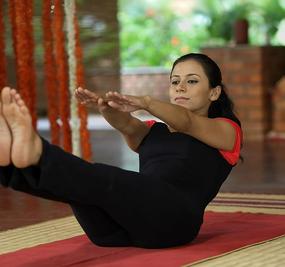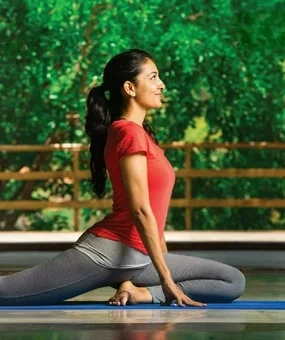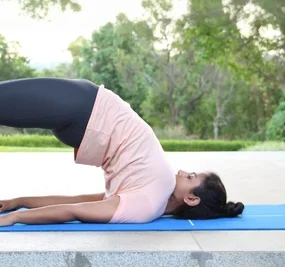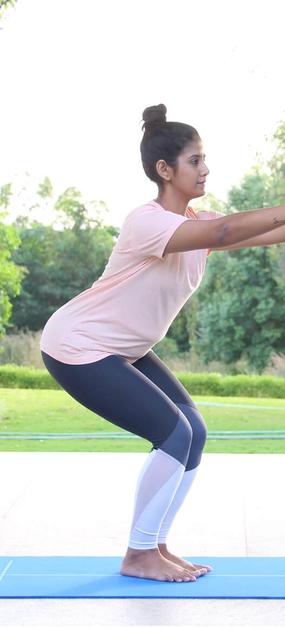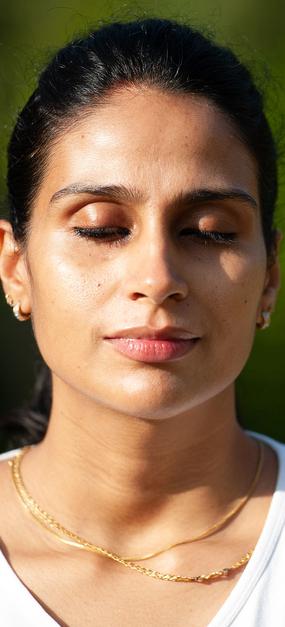(This posture is pronounced as: go-moo-KAHS-anna)
A Sanskrit word, Gomukhasana literally translates into a cow face posture (go – cow, mukha – face, asana – pose). A seated yoga posture, Gomukhasana can be performed along with a set of different seated asanas. It helps stretch the arms, triceps, shoulders, and chest. Requiring the practitioner to sit erectly, it also enhances one’s posture.
Description: The feet on both sides represent the ears and the crossed legs look like the cow’s face.
How to do Gomukhasana
- Sit on the yoga mat with your back straight and legs extended in front of you. Put your feet together and place your palms next to your hips.
- Bend your right leg and place the right feet under your left buttock.
- Stack your left knee over your right knee.
- Raise the left arm above your head and bend the elbow. Simultaneously, bring the right arm behind your back and interlock both hands.
- Take deep ujjayi breaths and stay as long as you are comfortable.
- Now, as you exhale, release your arms.
- Uncross your legs and repeat for the other leg.
- You can either hold the posture while the breath is held or you can try holding the posture while breathing gently through the nostrils. If you choose to breath, then hold the posture for thirty seconds to a minute. Repeat the gomukha-asana two to three times on each side.
Gomukhasana Video
Beginner’s tip:
Your left hand may not be able to reach the right hand and vice-a-versa initially. In which case, do not exert too much force. With practice, both hands will be able to hold on another.
Benefits of Gomukhasana:
- Cures sciatica
- Helps in high blood-pressure
- Reproductive organs are toned and massaged with regular practice
- Cures stiff shoulders
- Elongates spine
- Beneficial for those with bad posture
- Reduces stress and anxiety
- Strengthens back muscles
- Stimulates kidneys
- Strengthens muscles of ankles, hips, thighs, shoulders, triceps, inner armpits and chest
Contraindications:
- Shoulder pain or injury: If you are experiencing excessive shoulder pain, refrain from doing Gomukhasana. If the pain in the shoulder is not much, do the posture under the supervision of a trained yoga teacher
- Pain in any of the key body parts: It is advisable not to do the asana when any of the body parts which are stretched while doing the posture are in heavy pain
- Soft tissue injury in leg: Soft tissue injury means the damage of muscles, ligaments, and tendons. It generally arises from a strain or sprain
- Muscle tear or pain in thighs
- Bleeding piles
- Spondylitis
Doing Gomukhasana in the above-mentioned conditions can aggravate the condition. So, it is important to avoid doing the posture in these conditions.
All Yoga Poses Previous yoga pose: Vajrasana Next yoga pose: Janu Shirasasana



